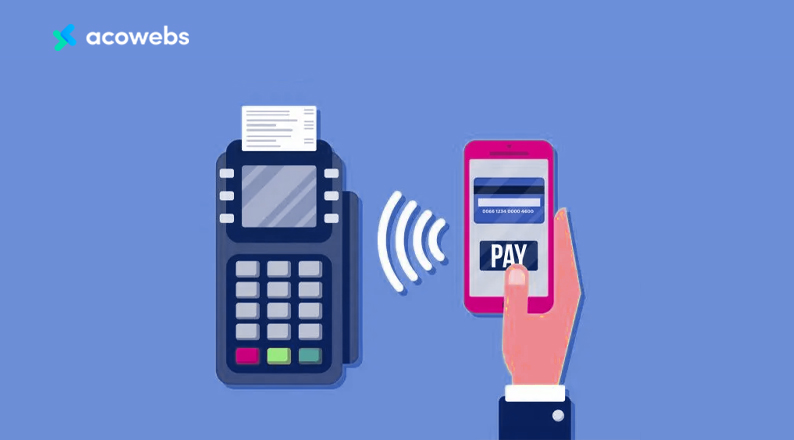Our lives as we knew them had changed dramatically before we got halfway through 2020, largely because of the COVID-19 pandemic. But things have changed since. Lockdowns that were so common last year have decreased, and restaurants, cinemas, and gyms have reopened. Many small and mid-sized enterprises are, however, experiencing staffing shortages and many kids are still out of school (whether by choice or obligation).
Meanwhile, many office employees are dealing with the difficulties of returning to work while the virus (to some extent) is still a factor, or choosing to leave their employment, preferring employers that will allow them to work from home.
Despite the fact that some people believe we’ve entered the “post-COVID” period, things are still changing rapidly. eCommerce businesses are seeing notable shifts in behavior amongst their customers. Many of these behaviors did not exist before the pandemic hit. Retailers are keen to see if these new ways of online shopping will stick well after the pandemic has disappeared.
During the COVID-19 crisis, the digital economy exploded. People turned to the internet for goods as social distancing became the norm. Now, 67% of consumers say they shop differently owing to COVID-19.
Online businesses were trying to figure out how to connect with customers in a digital world. They invested heavily in new technologies that connect them with their consumers or make their customer experiences more convenient. Retailers didn’t just attempt to keep up with growing online sales; rather, they embraced promising emerging technologies that brought about better ways of connecting with customers.
Here’s a round-up of the changing taking shape even as the world paces towards the end of the pandemic:
Spending Habits Are Evolving

There hasn’t been a “rush to spend” among vaccinated people yet, according to reporting by the Wall Street Journal. However, according to a March 2021 survey conducted by Experian, consumer spending habits are shifting somewhat, with 11% of respondents stating that they are now spending more on clothing than they did before Covid-19 hit.
Hand sanitizer and other cleaning materials are still very popular as people focus more on healthy hygiene habits. In fact, the worldwide hand sanitizer market is anticipated to expand at a CAGR of 22.6% between 2020 and 2027.
Travel is another one that is changing. While there is a growing desire to go out and about, the majority of people would want to see friends and family first, with only around a third considering a leisure trip. The most common reason for traveling was to see family, followed by visiting friends and relatives.
The desire to go on vacation may be dampened by concerns about the health of one’s family members. However, vaccines will almost certainly play a role in people’s decisions to travel, with 74% of Americans saying they would consider signing up for some sort of vaccine passport or use an app that could disclose to airlines and immigration officials that they’ve been vaccinated.
The way we eat has changed, too. As restaurants closed down, home cooking became more popular and often cost-effective. Despite the fact that more individuals are again dining out, there’s enough evidence to suggest that home cooking will remain popular in many homes.
According to a recent poll, 14% of respondents intended to increase their grocery-store purchases. In fact, close to half of respondents in an EY poll expected to cook at home more frequently. That’s excellent news for grocery stores, which faced supply-chain limitations and were compelled to shift strategies to online purchasing and delivery as well as contactless payments.
It’s unclear if delivery alternatives will even out or improve, with some consumers returning to in-store purchases. There is however one thing that’s certain: The rise in internet shopping and contactless payments has created a massive opportunity for grocery stores, and that opportunity will only grow bigger.
By 2025, e-commerce grocery sales in the United States are expected to reach $250 billion. That’s up 8% from pre-pandemic levels and represents 21% of all grocery sales. That isn’t to imply that consumers are leaving their local market.
According to a poll conducted in early 2021, 95% of customers carried out hybrid grocery shopping a few months after the first major coronavirus outbreak. Another thing to consider is that 34% of consumers who shop online are using more than one service, suggesting a shift away from brand loyalty in favor of the best bargain.
After a sharp decline, retail sales are rebounding

The retail industry is beginning to recover as businesses prepare for the return of personnel. Additionally, it’s time to trade in your pj’s for something more formal. This means you won’t be wearing sweatpants—or at least not while you’re on your rotation. Even if you don’t intend to update your professional wardrobe, there is a desire to acquire some new clothing for in-person social events.
Vaccinations are a major cause for the resurgence of interest. The vaccine rollout is expected to stimulate increased economic growth, retail sales, and consumer spending. That said, consumers are divided on how ready they are to shop, with half planning to spend on clothes and other retail items, while the other half is waiting a bit longer for the pandemic to abate further.
According to Mastercard SpendingPulse, April consumer spending in the United States rose 23.3 percent, with internet sales increasing nearly 20%. Department store business rose by more than 200% in the same month, as shops reopened and customers began looking forward to upgrading their wardrobes for both the office and pleasure. Consumers shopping online spent the most money on apparel, with sales increasing by more than 61%.
Regardless of what product or service consumers are purchasing, e-commerce is expected to drive the market. During the pandemic, brick-and-mortar businesses that previously had no e-commerce strategy at all started changing how they served customers. That’s a trend that appears to be here to stay.
Contactless Payments Will Be Around for the Longer Term

The growing popularity of contactless payment options is one of the most significant changes to emerge as a result of the pandemic. Consumers are increasingly willing to experiment with various forms of payment, according to recent surveys.
While around two-thirds of respondents said they would not have been interested in testing different types of payment under normal circumstances, this rose to over nine-tenths during the pandemic. According to Mastercard, there were approximately 1 billion more contactless transactions made in the first three months of 2021 than during a similar period in 2020.
Furthermore, a whopping 74% of those who made contactless payments during the epidemic said they would continue to do so. Because of the pandemic, we’ve had to think outside the box. Consumers want choice and flexibility, and retailers throughout the world need to provide a variety of payment alternatives that are simple to access and always available.
Popular new product categories
Grocery eCommerce grew by leaps and bounds in March 2020. In only a few months, the grocery e-commerce market in America has advanced by three to five years. During the peak of the pandemic, up to 30% of all companies switched to the internet. At the conclusion of 2020, online grocery penetration was at 9-12%.
With the proliferation of product categories, consumers are more likely to purchase from internet merchants. In 2021, Walmart expanded its digital grocery business, and eMarketer predicts that they will outsell Amazon in that category this year.
We also discovered that sales of fitness products and home goods saw sales growth, too. The spending on recreational goods increased by 18% as a result of higher expenditures on home gym equipment while the furniture and household equipment industry expanded by 5.7 percent.
Will these patterns continue through the shift to the “new normal”? Grocery e-commerce sales are projected to increase at a rapid pace, reaching 14-18% penetration in the next five or so years, but some market watchers expect home goods and fitness expenditures will start their decline.
Customer loyalty is declining

The solution for managing client information, class schedules, reminders, staff payments, and the vast amount of information that yoga studios deal with every day is Wellyx yoga booking software.
Consumers’ loyalty to their usual brands has decreased for a variety of reasons. According to eMarketer, in mid-2021, over 80% of customers bought products from a different brand than they usually do — and this is something that began soon after the pandemic hit. The most popular reasons for not purchasing are because of lower prices at 65%, and out-of-stock items at 51%.
It’s becoming increasingly popular to buy products via social media
The increased online retail demand was also recognized by several social media sites, which added more commerce features to allow customers to browse and buy items without needing to leave the platform. These platforms are frequently tightly linked to e-commerce systems so that retailers may quickly advertise their items in a variety of locations.
According to available research, social commerce accounted for 3.4 percent of all e-commerce sales in 2020. While social networks provide more possibilities than ever before to contribute to total retail sales, it isn’t only via on-platform purchasing.
The majority of Gen Z and Millennials believe social media platforms are superior places to discover new products and services than online search.
After COVID, omnichannel commerce will be the norm.
It’s obvious that the major transition to e-commerce took place in 2020 and accelerated in 2021 — but will this trend continue well into 2022 and beyond?
According to eMarketer, worldwide retail eCommerce sales will rise by double digits every year through 2023. However, foot traffic is also gradually returning.
It’s also obvious that the option of online sales vs brick-and-mortar stores will not be enough. Instead, providing a compelling omnichannel experience will be a must for success.
Moving forward, companies should anticipate regular disruptions. Retailers must prepare for the bullwhip effect (an increase in inventory swings owing to incessant changes in consumer demand). What’s more, given the fast-changing nature of today’s job market, retailers must plan for future employment disruptions.
Conclusion
COVID-19 has had a significant impact on the way people around the globe live their lives, and many of those changes are expected to remain in place after the pandemic is over. The world will not return to normal; rather, it will establish a new one. Geographic boundaries are no longer a barrier as far as shopping is concerned, and e-commerce, powered largely by contactless payments, is here for good.
Acowebs are developers of many leading WooCommerce plugins in the market. One of the leading WooCommerce plugins from Acowebs is the WooCommerce Discount Rules which will help you with discounts on products in your store. There is also a free version of this plugin that can be downloaded from WordPress named WooCommerce Dynamic Pricing which is currently being used by nearly 10,000 users.
Acowebs also have a Shopify Apps vertical and one of the leading Apps in this category is the Shopify Reports App which is currently available in the Shopify App store.












 Login
Login
 Cart
Cart







